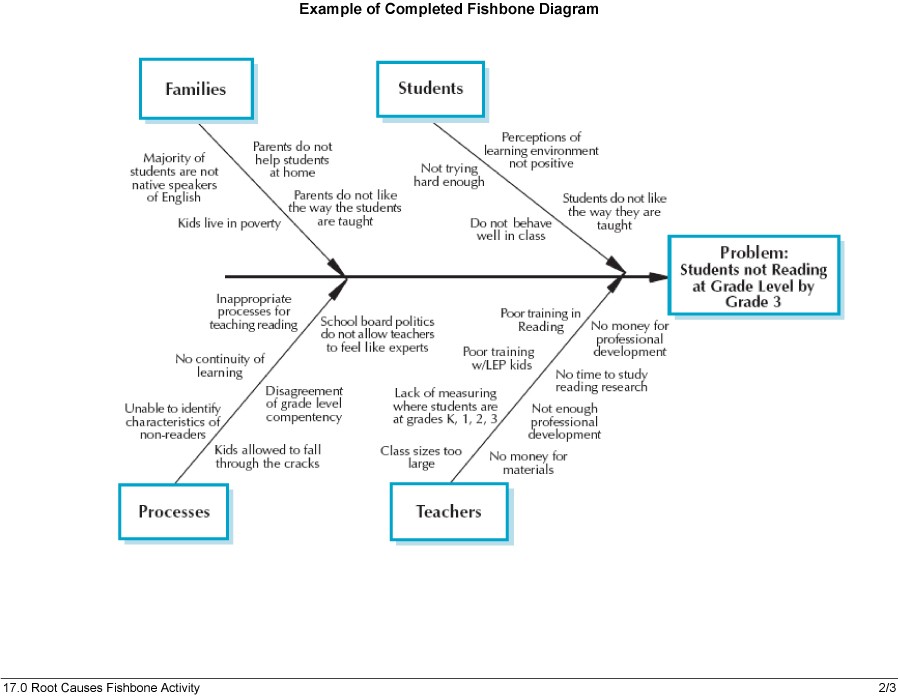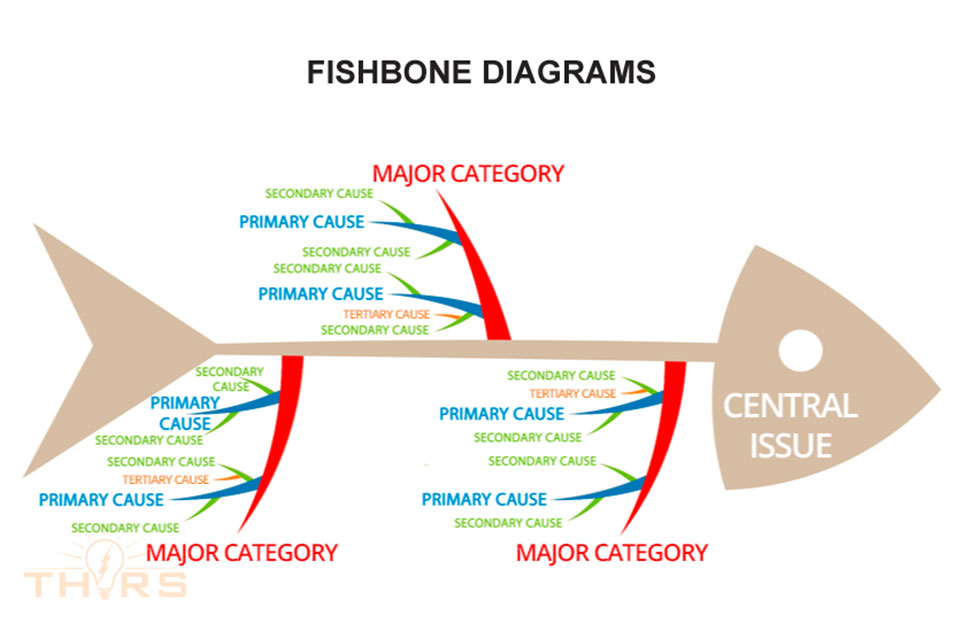
In this article we will be understanding another tool to perform root cause analysis, understanding the cause and effect relationship that leads to your problem and why such a problem has occurred.īefore we understand deep about fishbone diagrams, it is important to know the difference between 5 Why and Fishbone - The former is used as a practical questions technique depending on how effective the questions are asked to reach the root of the problem. Get the teams to start identifying day to day issues, using QCPC charts and then running quick problem solving sessions, using fishbone diagrams and 5 whys together, 3 times a month for the highest turnbacks on these QCPC charts.Two weeks back we had understood about 5 Why problem-solving, if you have missed the article please refer to the link in the comment box. As a part of Visual Management, why not create and place a number of large Problem solving boards around the shop floor or in the office. Leave every task and bit of information clear and concise, so the team understands what is expected of them.ĥ. Have regular reviews with the team in between events, checking for status against the action plan, and work ways of getting tasks back on track if they are falling behind schedule. Hold people accountable and summarise the event, including the actions and deliverables to take away.ģ. Remember, as with any task-based activity, always close the session off with actions and owners – “Who is doing what by when?” This is important, as it keeps the teams focused on the project.Ģ. The next step would be to pick the top three causes and delve deeper to find the true root causes.ġ. They then got a cross functional team together to understand possible reasons, listing each possible cause into categories. The group in the example below, had a problem with excessive scrap. The team may then investigate these causes further and use problem-solving techniques like 5 Whys to eliminate their occurrences. These three issues will now form the basis of additional investigation in order to find the root cause.

(An issue can fall in a number of categories) and continue this process until the group have run out of ideas. Continue going through the rounds, getting more causes, until all ideas are exhausted.įor each cause, agree in the group which category the issue should fall in. You could use the approach of writing each cause on post it notes, going around the group asking each person for one cause. Now brainstorm all the causes to the problem. You can use the generic cause categories of People, Method, Machine, Material, Environment, which is easier to use for a group that is relatively new to this exercise, or you can brainstorm the major categories related to the specific problem. These represent the main cause categories. Now draw the line going from left to right as the ‘Spine’, connecting to the problem statement.ĭraw the ‘fishbones’ emanating from the spine. Be as clear and specific as you can about the problem.
FISHBONE DIAGRAM PROBLEM SOLVING HOW TO
How to Conduct a Fishbone Diagramĭraw the box on the right of a flip chart or large dry wipe board, and write the problem statement in the box. It also displays a real-time ‘snap-shot’ of the collective inputs of the team as it is updated. It enables the team to focus on why the problem occurs, and not on the history or symptoms of the problem, or other topics that digress from the intent of the session. The prime remit is to brainstorm all the possibilities that could cause the problem and then drill down to the factor(s) that are causing this issue. In a fishbone diagram, the various causes are grouped into categories and the causes cascade from the main categories, flowing towards the effect, forming what resembles a fishbone appearance.

Often referred to as a cause and effect diagram, or Ishikawa, it is a simple root cause analysis tool that is used for brainstorming issues and causes of particular problems and can and often is used in conjunction with the 5 Whys tool. The fishbone diagram is a simple tool that allows quick and effective root causes to be understood, in the pursuit of corrective actions. Why Problem Solving in Business Usually Fails.



 0 kommentar(er)
0 kommentar(er)
